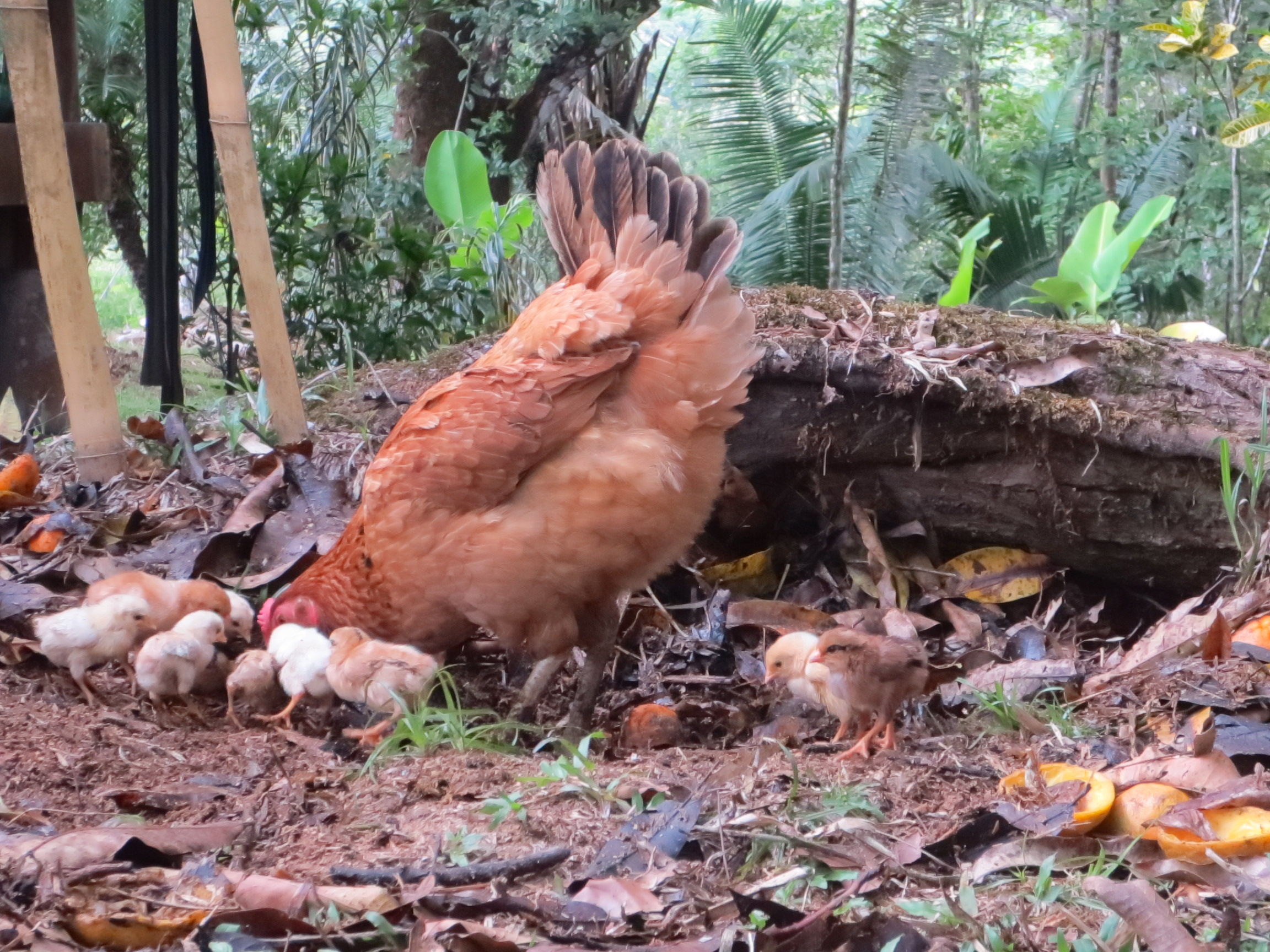Not so long ago, not very far from you, a whole lot of people lived off the land. They grew some staple crops on rich soil along with vegetables and fruit trees. Most families had some free running chickens, a couple of pigs, and perhaps some other animals. Every day people drank raw milk and ate their fertilized eggs.
Then the roads came. Electricity was installed along the road and since everyone wanted to be hooked up to the radio and television, most families moved to small lots along the roads where they built themselves cement houses – with the cement, sand, and gravel that could now be brought easily with the road.
I’ve seen this story unfold in strikingly similar ways in many countries across all continents – just at different stages, and perhaps at a different pace.
In terms of the topic at hand, it goes on like this: some families kept chickens and other animals. Pigs were now enclosed in tiny confinements made up of cement floors and metal sheet roofs. Chickens were also enclosed in small unsanitary shelters. People bought commercial feed for their animals and themselves. “Real” chickens don’t do well in unnatural conditions but over-bred, degenerated, tragicomic breeds of hens lay more eggs more consistently and seem to do just fine with commercial feed and confinement. The result is that most families who kept laying hens switched to these industrial “copies”. With a regular dose of medication of course. Professional farmers were the first to switch. Same goes for chickens grown for meat. These “chickens” have little in common with their ancestors.
Degenerated laying hens, or meat chickens, have lost most everything. Even the instinct of reproduction. Hens don’t sit on their sterile eggs and don’t ever try to protect them. In fact they can’t even get by in a natural environment since they can’t protect themselves from wildlife predators. They’re unable to fly and are often incompetent at finding adequate food. The list goes on.
Though there are more chickens in the world today than any other bird species, the number of breeds has been reduced by 75% in the last 60 years. This perhaps irrecoverable loss of biodiversity (irrecoverable in the sense that the world has lost some traits and genetic properties of older breeds) seems incredible, but these figures actually hold true for most every type of plant and animal species. Destruction of habitat, environmental pollution, large-scale commercial production are all contributing factors but the ultimate cause remains the sheepness of man.
When we looked to establish our flock of real chickens here at RDS we did a whole lot of due diligence in order to acquire old breeds of chickens who were truly free ranging. We looked for hardy local breeds of chickens who have lived all their lives pasturing and reproducing freely. We started with a small group of a dozen hens and a rooster. We introduced them to their chicken coop and took a few days to train them to lay their eggs there and return to the coop at night.
Today there are about 50 chickens roaming around the farm. We also have a few growing “real” turkeys. All our eggs are fertilized and it seems there’s always a hen sitting on some eggs so our flock is going to continue to grow as our chicken arc remains occupied.
Our chickens in their coop:
Mama and baby chickens:
The growing turkeys:
Our real, fertilized eggs:
In a world where higher yields is held up as the ultimate aim of farming, it may be difficult to explain why you’d want to have chickens who lay fewer eggs less consistently and require a lot of space, diverse quality forage, and a healthy ecosystem of insects to thrive. Real chickens are able to fly so setting up enclosed areas (for a rotational paddock system for example) is also very challenging. You’ll always get some who can get out and head to your newly planted banana trees! This is why a farm needs to integrate its various elements harmoniously – plants, fields, livestock, fruit trees, buildings, etc all need to work together like a single organism rather than developing independent units and attempt to make them coexist.
Some natural chicken behavior:
We take care of the soil and plant varied pasture so that our chickens can live and grow in adequate natural conditions. Chickens can fertilize entire areas of soil, or even help in working it for planting. They sanitize cattle, goat and horse poop, and their eggs, meat, and organs provide us with nutrient-rich food. Not the mention the fun of having them around and observing them while they live and fulfill their own cosmic purpose.
Our famous rooster:
There’s obviously a lot more to say about chickens so make sure to stay tuned for more posts and pictures. You can follow us on Facebook, Google+, and subscribe to the newsletter (roughly one email per month).




[…] like the chickens living here at RDS, our pigs are truly free ranging in a natural habitat where they can live a […]
[…] supplement their daily diet, we give some sprouted corn to our chickens and turkeys. Sprouting the corn increases the grains’ digestibility and nutrient availability. And […]
[…] regular hatching of new baby chicks from real chickens is one of the greatest joys of free-range poultry […]
[…] simmering on one of our wood fired ovens. Fresh fish, real chicken and real eggs from our truly unique flock, raw cow and goat milk as well as kefir, cheese, and yogurt, raw honey, etc. These are some […]